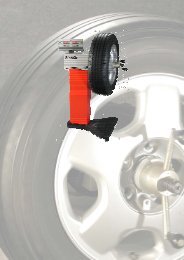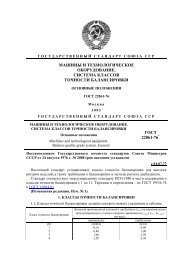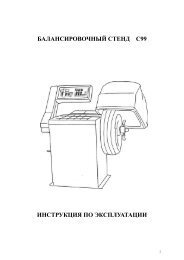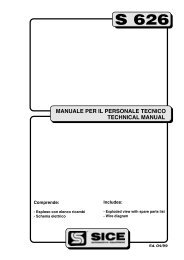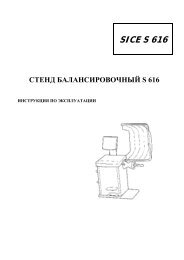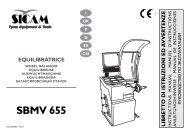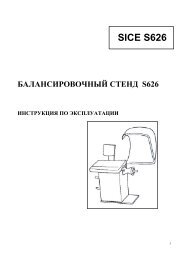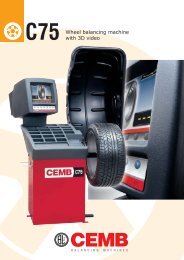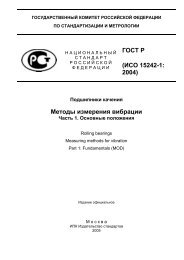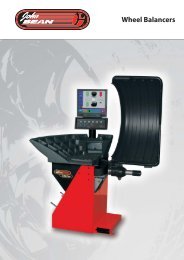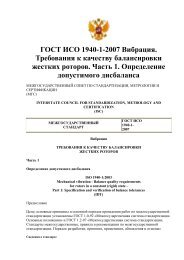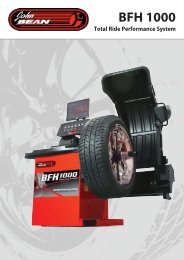Garrett Catalog - RB Racing
Garrett Catalog - RB Racing
Garrett Catalog - RB Racing
Create successful ePaper yourself
Turn your PDF publications into a flip-book with our unique Google optimized e-Paper software.
<strong>Garrett</strong> ®<br />
by Honeywell<br />
Turbo Selection - Diesel<br />
Looking at the previous map, the compressor does not flow<br />
enough to support this requirement, so we must look at the next<br />
larger size compressor. (Technically, the engine could probably<br />
easily make this power with the previous compressor, but it would<br />
be at risk of more smoke, higher EGT’s and backpressure; kind of<br />
like pushing a stock compressor too far…) The next larger turbo is<br />
a <strong>Garrett</strong> ® GT4094R. Another option that could also be considered<br />
is the GT4294R which has<br />
a slightly larger inducer<br />
compressor and the next<br />
larger frame size turbine<br />
wheel. The larger wheel’s<br />
inertia will slow down the<br />
response a bit, but provide<br />
better performance at the<br />
top end of the rpm range.<br />
For the next example,<br />
let’s look at the Extreme<br />
P e r f o r m a n c e . T h i s<br />
category is for real hot rod<br />
vehicles that have up to<br />
350 horsepower over stock<br />
and owners that are willing<br />
to give up some of the daily utility in order to achieve higher power<br />
gains.<br />
Plugging that power target into our formula yields an airflow<br />
requirement of:<br />
of air<br />
And a pressure ratio of :<br />
= 50.8 psia<br />
= 52.8 psia<br />
= 3.8<br />
For this flow and pressure ratio, the GT4202R is appropriate and<br />
is shown below. Since this is approaching a pressure ratio of 4-<br />
to-1, we are about at the limit of a single turbo on an engine of this<br />
size.<br />
Additional power gains can be had with more boost or a larger<br />
single turbo, but it is<br />
getting close to the edge<br />
of the envelope in terms of<br />
efficiency and turbo speed.<br />
The final case is the<br />
Competition category.<br />
Since this is a special case<br />
and there are so many ways<br />
to go about an ultimate<br />
power diesel application,<br />
it is not possible to cover it<br />
adequately in this article.<br />
There are, however, some<br />
general guidelines. At<br />
this power level, as stated<br />
above, it is a good idea<br />
to consider a series turbo<br />
application. This is a situation where one turbo feeds another turbo,<br />
sharing the work of compressing the air across both compressors.<br />
A larger turbo is designated as the “low-pressure” turbo and the<br />
smaller secondary stage as the “high pressure” turbo. The lowpressure<br />
compressor feeds the high-pressure compressor which<br />
then feeds the intake. On the turbine-side the exhaust first passes<br />
through the high-pressure turbine and then on to the low-pressure<br />
turbine before being routed out through the tailpipe. We can still<br />
calculate the required mass flow, but the pressure ratio is more<br />
involved and questions should be discussed with your local <strong>Garrett</strong> ®<br />
PowerMax TM distributor. To calculate the required mass flow, we<br />
use the normal equation. This time the power target will be 500<br />
wheel horsepower over stock, for a total of 775 wheel horsepower.<br />
of air flow.<br />
This air flow rate will apply only to the low-pressure compressor<br />
as the high-pressure compressor will be smaller because it is further<br />
pressurizing already compressed air. In most cases, the highpressure<br />
turbo tends to be about two frame sizes smaller than the<br />
low pressure stage. So in this case, after selecting the appropriate<br />
low-pressure turbo (hint: look at the GT4718R compressor map), a<br />
GT4088R or GT4094R would be the likely candidates.<br />
One more comment on<br />
choosing a properly sized<br />
turbine housing A/R. A<br />
smaller A/R will help the<br />
turbo come up on boost<br />
sooner and provide a better<br />
responding turbo application,<br />
but at the expense<br />
of higher back pressure in<br />
the higher rpm zones and,<br />
in some cases, a risk of<br />
pushing the compressor<br />
into surge if the boost rises<br />
too rapidly. On the other<br />
hand, a larger A/R will respond<br />
slower, but with better<br />
top end performance<br />
and reduced risk of running<br />
the compressor into<br />
surge. Generally speaking,<br />
the proper turbine housing<br />
is the largest one that<br />
will give acceptable boost<br />
response on the low end<br />
while allowing for more optimal<br />
top end performance.<br />
This information should<br />
be used as a starting point<br />
for making decisions on<br />
proper turbo sizing.<br />
For more specific<br />
information on your<br />
engine, consult a <strong>Garrett</strong> ®<br />
PowerMax TM Distributor.<br />
Find your <strong>Garrett</strong> ®<br />
PowerMax TM Distributor<br />
at<br />
www.TurboBy<strong>Garrett</strong>.com.<br />
Honeywell<br />
www.TurboBy<strong>Garrett</strong>.com<br />
15



